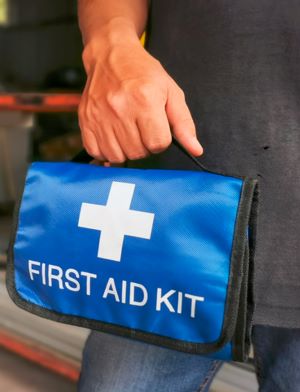How much does a workplace injury cost?
Workplace injuries are expensive. A workplace injury and all the contributing costs become a financial obligation that ultimately impact the employer's profits and ability to remain competitive. But how are they calculated? And how can a business forecast or at least prepare for costs of this nature to lessen their impact?
This article can't address all the possible permutations and factors, so instead our focus will just be on the costs that immediately follow a workplace injury. And while injuries are an incredibly personal matter for the person involved, and a tragedy no matter the circumstance, we are going to limit our discussion to impacts to the business.
Calculating the cost of an injury
 Calculating costs immediately following an injury can be relatively straightforward, if done properly. The terms most often used are "direct costs" and "indirect costs."
Calculating costs immediately following an injury can be relatively straightforward, if done properly. The terms most often used are "direct costs" and "indirect costs."
Direct costs
A direct cost is the actual amount of money spent to provide immediate care for the injured person, whether on-site as first aid or offsite with a medical professional. A direct cost will also include any follow-up or rehab visits. These services can be tracked, but these usually exist outside of your planned budget.
Indirect Costs
An indirect cost is more difficult to price out, and is sometimes considered to be "hidden." Examples of these costs include the time and number of people needed to conduct the incident investigation, additional overtime to replace the injured employee or to make up production losses, training additional employees, and time and resources needed to correct hazards or to revise or write effective procedures. The accepted calculation for adding indirect costs to an injury is to multiply direct costs by a factor of 4 or 5.
Quick estimate
You can get a quick determination of an injury's costs through OSHA's Safety Pays estimator. These costs are established using national averages taken directly from workers' compensation claims through the National Council on Compensation Insurance, Inc. They allow you to obtain an initial estimate on the injury that just occurred. The estimator also lets you add your NAICS number for specific industry calculations. These are accepted estimates used for presentation purposes, and help management better understand why injuries can and should be controlled from a business perspective as well as from an employee perspective.
Injuries and insurance
Employers are required to provide workers' compensation benefits to employees through company-paid insurance. The premium amount is determined once the insurance carrier reviews the current industry average and employer's financial and incident history. This premium is then recorded in the company budget as a line item.
The experience modification rate, or "mod rate", is a big factor in calculating premiums. This rate can change over time based on the employer's performance. An employer who values safety and values his/her employees will often see a positive change in its mod rate, be given discounts, and may also qualify for a percentage of premium reimbursement.
Injury impact on company finances
Carrier premiums can be budgeted for each performance year, but they're not the only cost associated with insurance. There are deductibles, co-pays, and indirect in-house costs that go beyond the budgeted insurance premium.
The direct and indirect injury-related costs that we discussed above are generally not included in the budget due to being hard to predict. You can set aside funds for potential use, but that's not the same as making a forecast.
Where is the money for these injuries coming from? Well, every work-related injury or illness comes directly out of company profits. Without an effective safety culture, it's difficult to manage or anticipate how much money will be needed to address injuries. Those costs can lead to additional losses, such as stock value, shareholder confidence, community reputation, high turnover of employees, constant training of new hires, and other employee-relation issues.
Injuries also take money out of the employer and employees' pockets. These costs impact employee profit-sharing programs, supervisor/manager bonuses, and loss of expendable cash for new equipment or maintenance. The downward spiral in losses can happen quickly and the need for increased sales to place additional strain on the sales team and management.
Cost vs. Investment
Protecting your team is an important strategy in reducing both frequency and severity of injuries. Purchasing PPE based solely on price places the PPE user at risk since it generally doesn't fit users well or provide appropriate protection. The cheap price begets low or poor quality products that need to be replaced so frequently that it becomes far more expensive than purchasing a quality PPE product.
When safety is viewed as a value rather than a necessary expense, the cost of remaining safe drops. Employees recognize your commitment to them; you don't run a toothless program or settle for the cheapest means of providing protection. That encourages more participation from every member of the team, who pay more attention to safe practices while ensuring the right PPE is in use. It is a win-win on the "investment" side.
How Mechanix Wear helps
If you're trying to increase safety in your facility while watching your budget, Mechanix Wear can help with its free TRACK program. Mechanix Wear partners with you to provide a documented risk assessment of your facility. We can help you meet OSHA PPE requirements and provide recommendations of the PPE needed to address any identified hazards. Through the TRACK program, you can trial PPE with your team before committing to a purchase. This gives you immediate feedback from front-line employees who wear the PPE, ensuring you select and purchase the right PPE the first time!